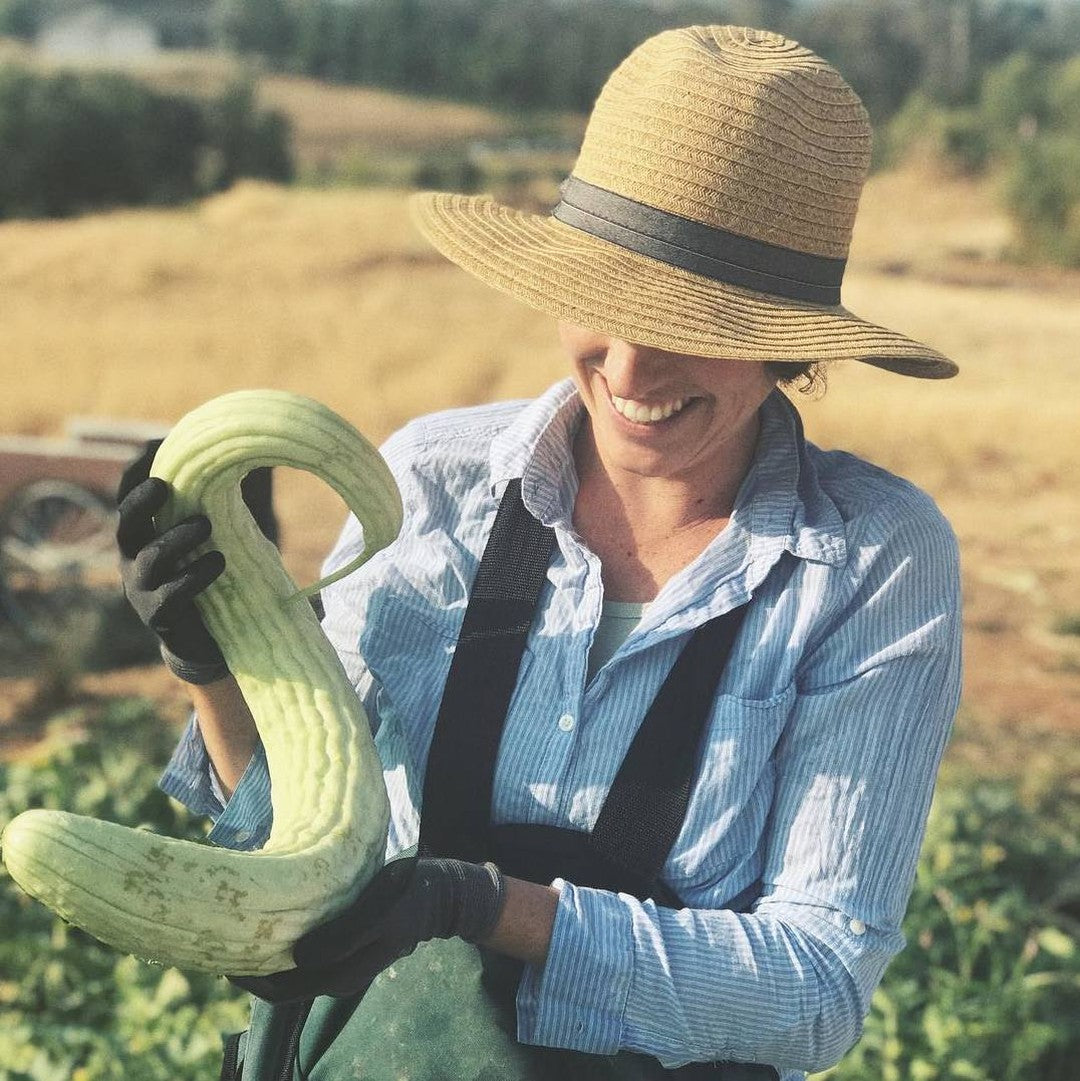Over 130 years ago, upwards of 40,000 Armenians who survived massacre and genocide managed to find "home" in Central California, after being forced to leave their homeland behind. The Hamidian massacres, also called the Armenian massacres, was the persecution of Armenians in the Ottoman Empire in the mid-1890s. Estimated casualties ranged from 100,000 to 300,000, resulting in 50,000 orphaned children.
These immigrants brought with them the seeds of "gootah" or "kutah" or "խթա" as it's known in Armenian. This long slender, ridged variety (its scientific name is "Cucumis melo var. flexuosus") was first bred in Armenia in the 15th century. It is also known as “kakri” in India, “atta” in Egypt, “mekti” in Lebanon, and “acur” in Turkey.
In America however, this unusual vegetable became known as the Armenian Cucumber. One problem is that it’s not a cucumber at all, it's actually a melon. And if there's one thing Armenians have excelled at for hundreds of years, it's being premiere melon connoisseurs.
In the 15th century, the melon was even brought to Italy from Armenia and named after "Melono," a city near Rome that at the time, served as a county seat for the "Papal States," territory that was under direct rule of the Pope.
The Armenian Cucumber really gained popularity in the USA in 1959, in Arizona, an Armenian woman named Anna Garabedian grew an Armenian Cucumber so big, it made the front page news section.
"Giant Cucumber Grows in Tucson," the headline read. "Armenian Vegetable Well On Its Way To Becoming Yard Long, Foot Thick."
These seeds were not just for planting. These seeds became treasure. They were proof of life. And they followed Armenians across America as some kind of calling card, sprouting in the most unlikely of cities and towns, becoming a symbol of migration and the heritage that Armenians and Americans share in this country.


4 comments
Thank you for the history of this interesting plant. We are growing in our greenhouses. I look forward to adding the story when I sell them at market!
Thank you for this bit of 🇦🇲 history of the Armenian Cucumber.
Wow! What an interesting yet sad story behind this amazing ‘cucumber’ melon! Thanks for enlightening me as I purchased it a few hour ago before reading it’s history. When the seeds grow into fruit, I’ll be able to tell my family!
Thank you so much!
Cannot wait to read more information about the history of your plants and seeds